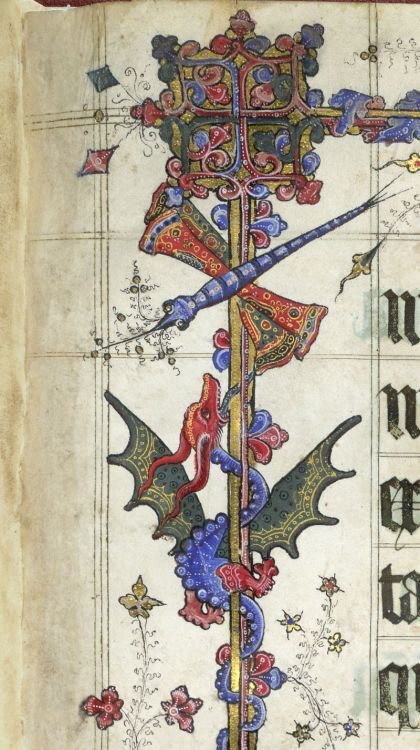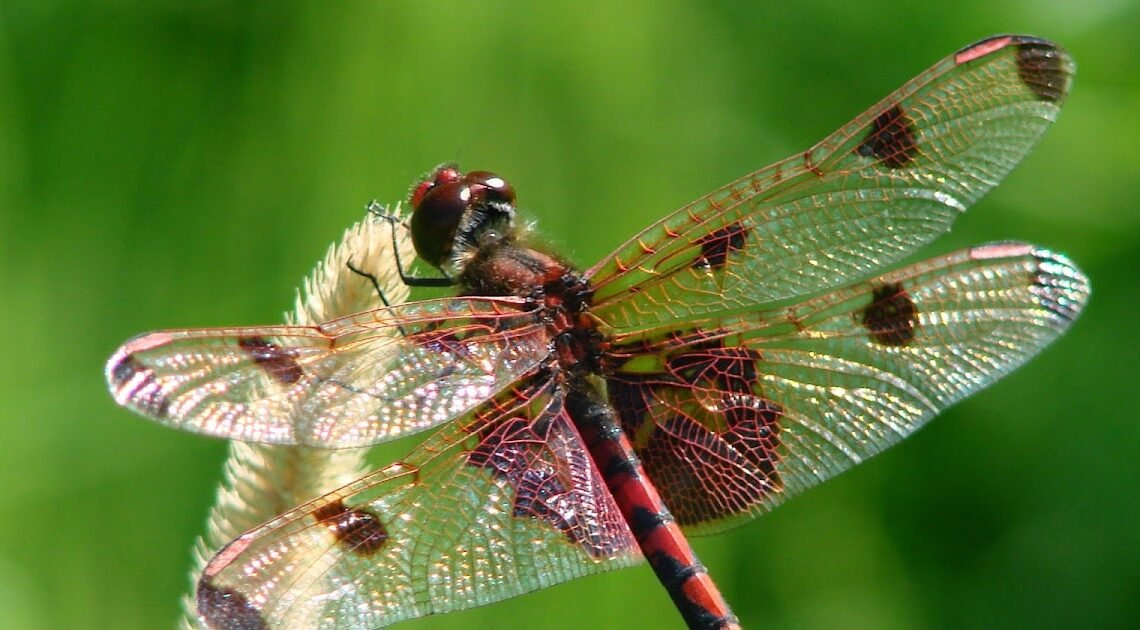In the wor;d of medieval manuscripts, few artefacts seize the creativeness as vividly as the Lovell Lectionary. This illuminated manuscript is a masterpiece of artwork, tradition, and spirituality, weaving collectively fable and devotion in a tapestry that speaks across centuries. Among its maximum interesting elements are the depictions of dragons and dragonflies, creatures rich in symbolism and lore. This weblog will take you on a journey via the art and meaning of those creatures within the Lovell Lectionary, uncovering insights into their mythological roles and spiritual messages.
Understanding the Lovell Lectionary
Origins and History
The Lovell Lectionary, a marvel of medieval illuminated manuscripts and Christian art, turned into crafted all through the peak of illuminated manuscript manufacturing. Its origins hinted returned to the past due 14th century, commissioned using a consumer with a deep appreciation for both religious devotion and inventive expression. The lectionary, an e-book of non-secular readings for specific days, exemplifies the medieval ardour for merging textual content with difficult imagery. It’s preserved today as a testament to the talent and creativity of its creators, who drew upon a wealthy way of life of medieval lectionaries to produce a work of putting up with splendour.
Purpose and Importance
Lectionaries were vital in medieval worship, serving as guides for clergy and laypeople alike within the party of the Christian liturgical yr. The Lovell Lectionary’s significance lies now not handiest in its feature however also in its function as a cultural artifact. It reflects the period’s difficult manuscript subculture, wherein spiritual texts had been adorned with imagery that conveyed deeper spiritual meanings. Through those photographs, lectionaries just like the Lovell now not simplest told the testimonies of religion but additionally engaged the viewer’s imagination and devotion.
Dragon Symbolism in Medieval Art and the Lovell Lectionary
The Cultural and Religious Symbolism of Dragons
Dragons have long fascinated humanity, often symbolizing chaos, danger, and temptation in European mythology, while in Christian art, they represent the struggle against evil.
Yet, paradoxically, dragons can also embody protection and strength in Eastern traditions. This duality makes them fascinating subjects in art, where they can evoke both fear and awe. Their presence in spiritual texts underscores humanity’s complex relationship with the unknown and the powerful.
Dragons in Christian Iconography
In Christian art, dragons frequently appear as symbols of sin and moral struggle. They are depicted as adversaries to saints and heroes, representing forces that must be overcome through faith and virtue. This iconography is evident in many medieval manuscripts, where dragons serve as potent visual metaphors for the Christian battle against evil. By portraying dragons in these contexts, medieval artists provided vivid narratives that reinforced spiritual teachings and inspired devotion.
Depictions of Dragons in the Lovell Lectionary
The Lovell Lectionary’s illustrations of dragons are outstanding for their creative detail and symbolic depth. These creatures, often intertwined with different elements, bring themes of struggle and redemption. The artists employed traditional medieval strategies, using problematic line paintings and colourful colourings to deliver these mythical beings to lifestyles. The positioning of dragons within the manuscript’s pages shows an intentional narrative, inviting viewers to mirror the non-secular training embodied through these effective symbols.
Dragonfly Symbolism in the Lovell Lectionary

Symbolism and Mythology of the Dragonfly
Dragonflies, though less fearsome than dragons, hold significant symbolic weight. Across cultures, they are seen as harbingers of change and transformation. Their brief lifespan and agile flight imbue them with meanings of adaptability and spiritual awakening. In art, dragonflies often symbolize lightness and emotional maturity, reflecting humanity’s desire for growth and enlightenment. Their presence in the Lovell Lectionary suggests a nuanced understanding of life’s fleeting and transformative nature.
The Spiritual Significance of Dragonflies in Medieval Art
In medieval manuscripts, dragonflies are linked to themes of rebirth and spirituality. Their delicate forms and vibrant colors make them ideal subjects for illustrating the transition from earthly concerns to spiritual truths. Like other creatures in medieval art, dragonflies communicate complex ideas through simple imagery, drawing viewers into a deeper contemplation of their faith. By incorporating dragonflies, artists provided a visual shorthand for concepts of renewal and divine insight.
The Role of Dragonflies in the Lovell Lectionary
Within the Lovell Lectionary, dragonflies are depicted with a grace that highlights their symbolic associations. The artists used color and placement strategically, ensuring these creatures stood out amidst the manuscript’s elaborate scenes. The dragonflies’ interactions with other images, including dragons, create a dynamic interplay that emphasizes the manuscript’s overarching themes of transformation and balance. This artistic choice invites readers to ponder the interconnectedness of life and spirituality.
Artistic Techniques and Styles in the Lovell Lectionary
Illuminated Manuscript Techniques
The Lovell Lectionary exemplifies the top of illuminated manuscript craftsmanship. Artists hired a variety of strategies, including using gold leaf to enhance textual content and imagery. Vivid pigments and elaborate borders similarly enriched the manuscript’s visual attraction, making it a banquet for the eyes and a tool for contemplation. These factors not best established artistic ability but additionally reinforced the text’s sacred nature, drawing readers into a meditative enjoy with each page.
Symbolic Use of Colors and Materials
Color played a crucial role in the Lovell Lectionary’s symbolism. Gold symbolized divinity and illumination, red represented passion and sacrifice, and blue conveyed calm and eternity. The materials themselves, precious and painstakingly applied, spoke to the value placed on religious texts and their role in spiritual life. Through careful color choices, the manuscript’s creators communicated complex theological concepts in a manner accessible to all who viewed it.
The Interplay of Dragon and Dragonfly Imagery
The juxtaposition of dragons and dragonflies in the Lovell Lectionary is a masterful example of symbolic storytelling. By placing these creatures together, the manuscript suggests a balance between strength and transformation, danger and grace. This interplay mirrors the human experience, with its constant tension between opposing forces. Through these images, the lectionary offers a visual meditation on the spiritual path, encouraging viewers to find harmony in their own lives.
Mythological and Spiritual Themes in the Lovell Lectionary
The Role of Mythology in Spiritual Texts
The Lovell Lectionary, like many medieval manuscripts, weaves mythology into its spiritual narrative. By incorporating mythical creatures, the manuscript creates a rich tapestry of meaning that extends beyond literal interpretation. Mythology serves as a bridge between the known and the unknown, allowing readers to explore profound spiritual truths through familiar stories. This integration enriches the lectionary, providing layers of depth and resonance for its audience.
The Spiritual Interpretation of Dragons and Dragonflies Together
Together, dragons and dragonflies in the Lovell Lectionary represent a powerful duality of protection and transformation. These creatures symbolize resilience, change, and the potential for renewal. By uniting them within the manuscript, the artists invite readers to consider the ways in which strength and adaptability can coexist harmoniously. This pairing offers a layered interpretation of spiritual growth, suggesting that true wisdom lies in balancing opposing forces.
Comparative Analysis Lovell Lectionary and Other Medieval Manuscripts
When evaluating the Lovell Lectionary to different well-known medieval manuscripts, consisting of the Book of Kells or the Très Riches Heures, we see distinct strategies to symbolism and artistry. While both the Book of Kells and the Lovell Lectionary function elaborate depictions of mythological creatures, the inclusion of dragonflies inside the Lovell Lectionary sets it aside.
Unlike the extra traditional use of dragons as symbols of evil or chaos, the dragonflies within the Lovell Lectionary are intertwined with issues of transformation and spiritual renewal, giving the manuscript a unique non secular size. While many texts feature dragons, the inclusion of dragonflies sets the Lovell apart, highlighting its revolutionary combination of fable and spirituality.
By examining those variations, we gain insight into the various ways medieval artists conveyed their messages. The Lovell Lectionary’s awesome imagery provides to its charm, making it a standout instance of creative expression inside the medieval length.
Conclusion
The Lovell Lectionary is a testament to the enduring power of art, myth, and spirituality. Through its depictions of dragons and dragonflies, it invites us to explore themes of transformation, balance, and resilience. These creatures, rich in symbolism, offer a window into the medieval worldview, reflecting humanity’s timeless fascination with the mystical and the divine. For modern readers, the Lovell Lectionary serves as a reminder of the beauty and complexity of spiritual expression, encouraging us to seek deeper connections in our own lives.
As we conclude this exploration, consider the ways in which these ancient symbols continue to resonate today. Whether through art, literature, or personal reflection, the themes of the Lovell Lectionary invite ongoing contemplation and discovery. For those interested in further study, numerous resources are available to deepen your understanding of medieval manuscripts and their profound spiritual messages.


